Get the secret recipe to having a lush, vibrant, and green lawn through healthy nitrogen-rich fertilizer application. This guide covers types of fertilizers, how to apply them, and much more!
Nitrogen-Rich Fertilizers For Lush Grass Tips
If you’re looking for a grass fertilizer guide to help you achieve a lush, vibrant lawn, then you’re in the right place. This nitrogen-rich fertilizer overview covers essential lush grass tips from fertilizer usage to types, application techniques, and common pitfalls.
You may be wondering why fertilizing lawns with nitrogen is important. Well, you’re about to find out one of the secrets to having lush, vibrant, green lawns.
Why Your Grass Loves Nitrogen: Key Benefits Explained
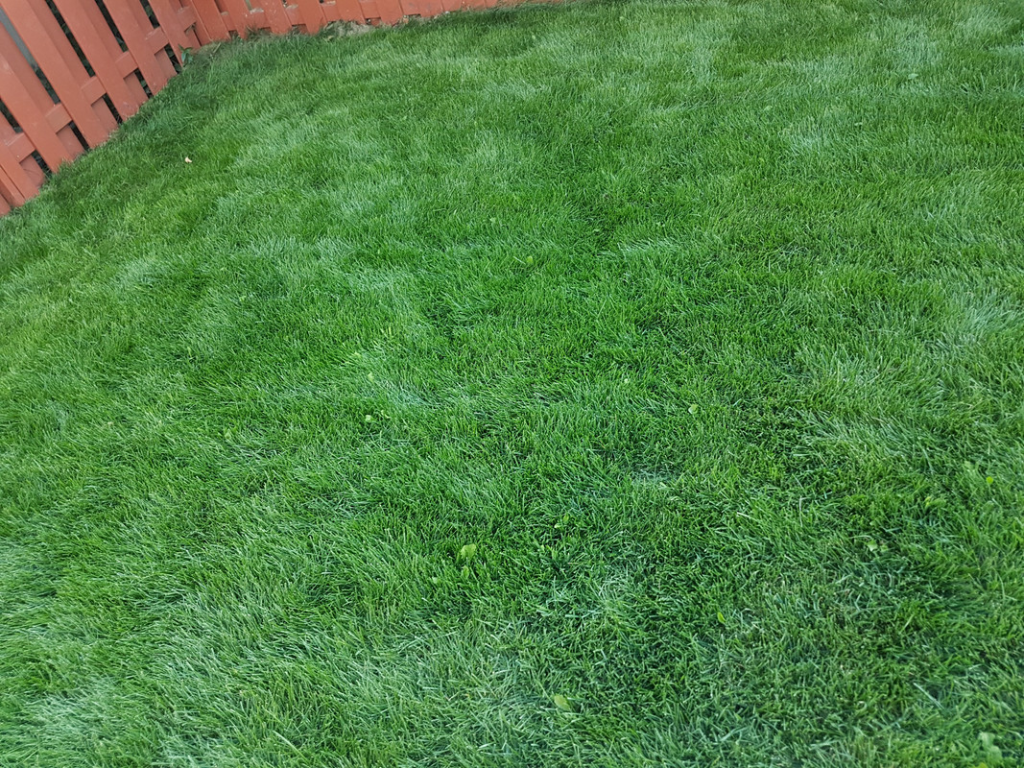
Nitrogen, Potassium, and Phosphorus or NPK are essential lawn growth nutrients present in fertilizers; however, they perform different functions. As the chief component, Nitrogen boosts grass health, color, and resilience, but that’s not all. It also aids photosynthesis, growth, and lawn recovery!
So if you’ve ever wondered about the secret tips to lush lawn that produce vibrant green grass, this guide is for you. Coming up, this overview will help you choose the right nitrogen rich fertilizer to reap these benefits while avoiding common mistakes.
Choosing Between Organic and Synthetic Nitrogen Fertilizers
Of course, you’d want the best nitrogen fertilizer for your lawn, so here’s a brief comparison between organic and synthetic fertilizers to make your decision easier.
Lawn Fertilizer Types

Organic Vs Synthetic Fertilizers?
Broadly, you can divide lawn fertilizer types by texture and components. Textures are either granular or liquid, while components can be synthetic or organic.
Let’s do an organic vs synthetic fertilizer comparison so you’d know the best one for your lawn.
Organic vs. Synthetic Fertilizer
- Organic Fertilizer: Organic fertilizers are made of natural materials like blood meal and fish emulsion, releasing nitrogen slowly. The slow release improves the soil’s health over time, making it the best option for eco-friendly gardeners.
- Synthetic Fertilizer: Meanwhile, synthetic fertilizers are made from chemicals like ammonium nitrate and urea. They release a burst of nutrients at once, which helps when your lawn needs an immediate jolt.
Both synthetic and organic fertilizers also have disadvantages when used wrongly.
Overapplication, especially of synthetic fertilizers, causes soil degradation in the long term. What’s key is choosing a lawn fertilizer that suits your lawn’s specific needs.
Selecting the Right Nitrogen Fertilizer for Your Lawn Type
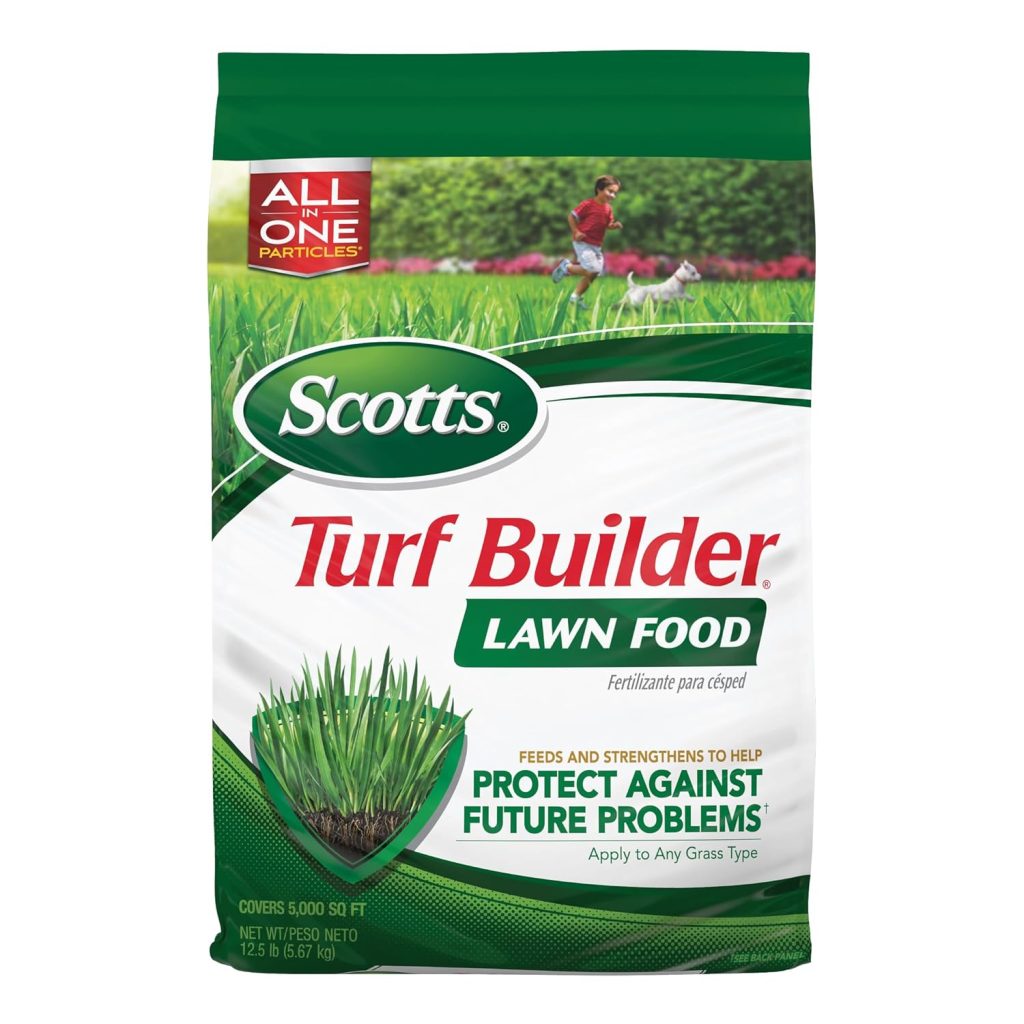
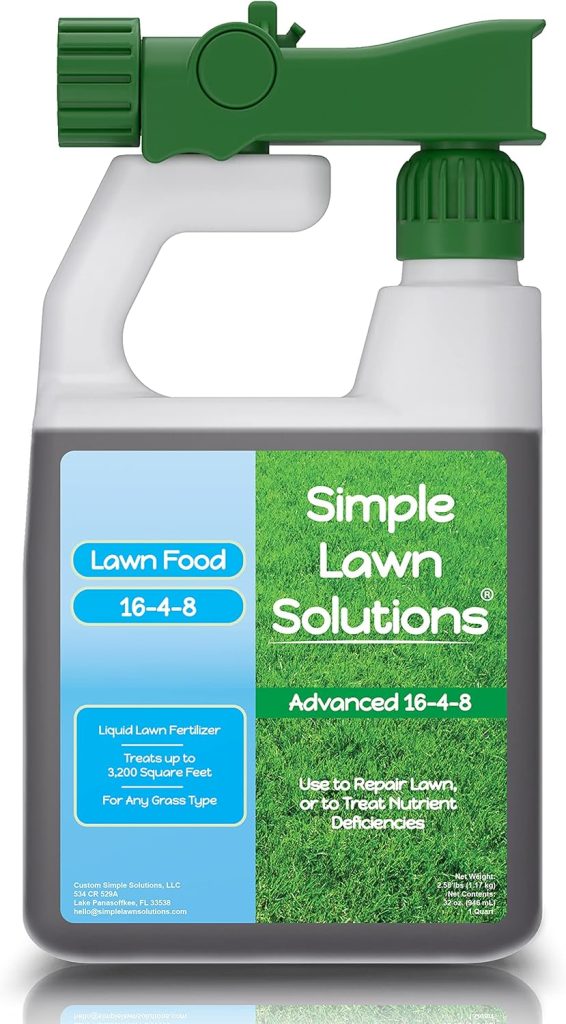
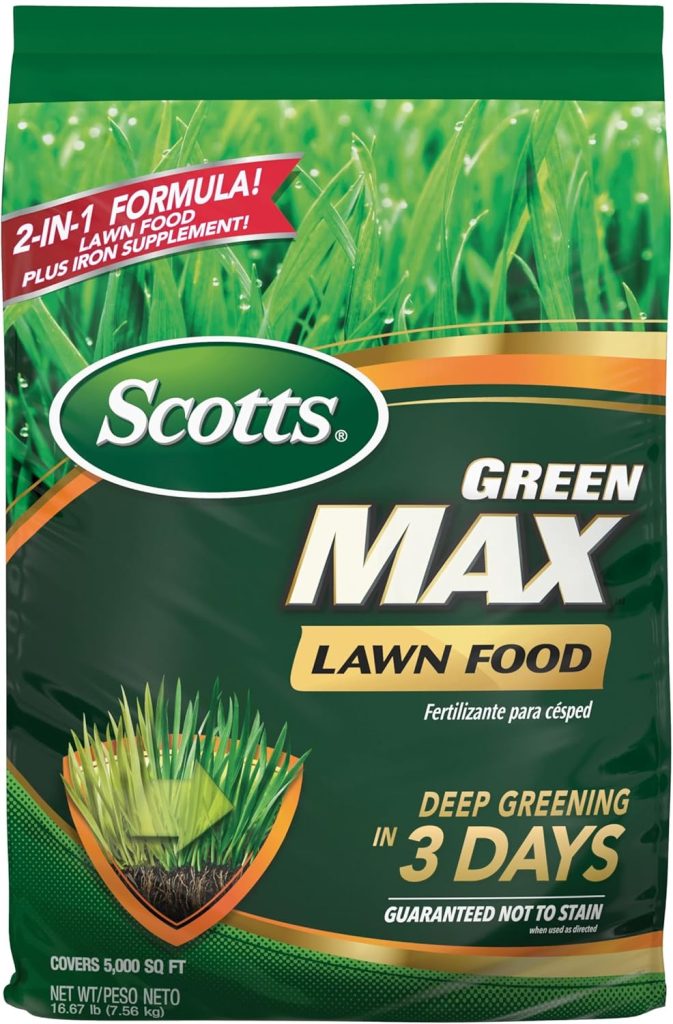
All Can be Found on Amazon From The Links Below
It may surprise you to learn that nitrogen fertilizer selection isn’t straightforward. That’s because the need for nitrogen-based fertilizers depends on the type of grass you have (warm-seasoned or cool-seasoned), the time of year, and the results of a soil test.
Here are our top picks at a glance:
- Scotts Turf Builder Lawn Food
- Simple Lawn Solutions Liquid Fertilizer
- Scotts Green Max Lawn Food
- The Andersons PGF Complete
Fertilizing your grass during peak season is the best time because you can always rely on nature to amplify your efforts.
Warm-Seasoned Fertilizer
For warm-season grasses like Bermuda, Zoysia, and St. Augustine, fertilizers such as 20-0-10 work well during the growing season. The high nitrogen encourages dense, green growth, while moderate potassium boosts heat and drought tolerance.
Apply these fertilizers mainly in late spring and summer when the grass is actively growing, and reduce nitrogen as fall approaches to help the lawn prepare for dormancy. Phosphorus is usually omitted unless a soil test shows it’s needed.
Cool-Seasoned Fertilizer
A fertilizer with a ratio like 10-0-20, 5-0-15, or similar (low N, high K, and little to no phosphorus unless a soil test shows you need it, more on testing later) is recommended as part of a balanced annual lawn care plan, especially in the late summer to fall winter prep application.
However, in spring or early summer, you’d typically use a fertilizer with more balanced nitrogen (like 20-0-10 or 16-4-8) to promote green growth.
Timing is Everything: When to Apply Nitrogen Fertilizer
Another important factor is fertilizer application timing. It may seem like a small thing, but it’s so essential that a wrongly timed application of the best nitrogen fertilizer wouldn’t work!
The best time to fertilize grass lawns depends on the grass type, as explained above. If you’re still confused about distinguishing grass types, then use the seasonal fertilization method.
Seasonal lawn care is a natural method used for keeping the lawn healthy, vibrant, and lush throughout the year.
Author’s Note: Checkout our post on The Best Time To Fertilize Grass for an in-depth guide on timing fertilizer application.
Proper Application Techniques for Healthy Grass

Found On Amazon
Another discovery you will make is that the application techniques affect the effectiveness of your nitrogen fertilizer. These easy methods of fertilizing grass correctly include:
Timing
Fertilizer application timing practices on fertilizer application methods, including even distribution techniques, use of spreaders, and watering after application to avoid lawn damage.
Even Distribution
Use a spreader to ensure even fertilizer distribution across the lawn and avoid patchy growth in untouched areas.
A broadcast spreader does this job effectively and works for granular and liquid types.
Watering
Don’t apply fertilizer to grasses that are already stressed from drought or heat. Instead, water the lawn after application to allow the fertilizer to penetrate into the soil and work on the roots.
Scheduling
Because you can only achieve long-term success in gardening through consistency, having a fertilization schedule keeps you in check.
Creating an Effective Fertilizer Schedule for Continuous Growth
Creating and sticking to an effective lawn fertilization schedule can be challenging because of the details involved. But when you follow this guide, it becomes a seamless part of your consistent lawn care routine.
Here are some practical steps for developing a consistent nitrogen fertilizer routine:
- Tailor the schedule for your grass type
- Study your local climate conditions and adapt to them
- Use a nitrogen-rich fertilizer by ensuring the NPK ratio has Nitrogen as the highest content.
As a general rule though, always fertilize your lawn during peak seasons and every 4-6 weeks if possible. If you don’t know when that is, scroll up for the details.
Common Fertilizing Mistakes and How to Avoid Them
In your excitement to practice the rules in this guide, it’s easy to make rookie lawn fertilizing mistakes, but as a member of this community, you won’t do that.
We’ll show you frequent mistakes homeowners make, such as fertilizer application errors (overfertilization, poor watering, and timing) and ignoring soil tests, along with actionable solutions to avoid these issues.
| Error | Solution |
| Overfertilization | Spread fertilizer evenly with a spreader and use measured amounts. |
| Poor Watering | Set an effective irrigation system to water the lawn after fertilization without waterlogging it. It also helps in preventing grass burn from your fertilizer’s reaction to heat. |
| Poor Timing | Practice seasonal lawn feeding. |
| Ignoring Soil Test | Take a small quantity of soil to a lab for testing or DIY with a soil test kit. |
Author’s Note: Check out the more accurate Mail-in Lab MySoil Soil Test Kit or the Convenient At-Home Rapitest Soil Test Kit for diagnosing nutrient deficiency and preparing your soil!
How to Tell if Your Grass Needs More Nitrogen
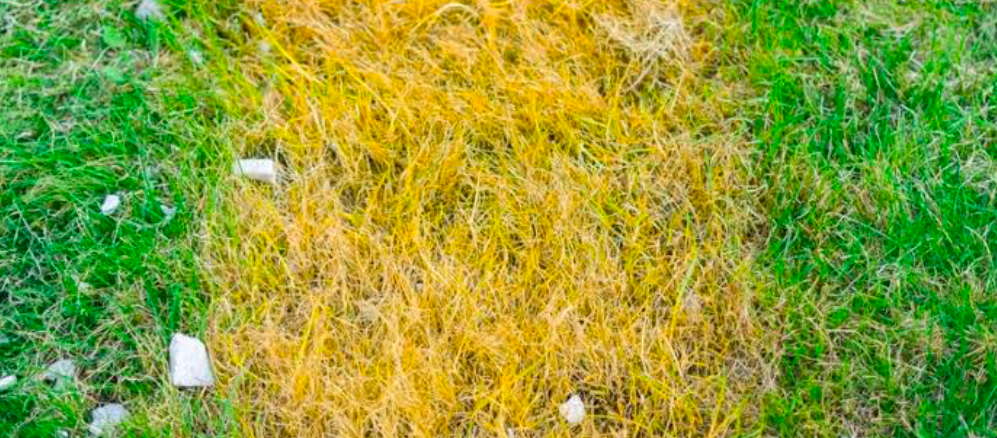
Diagnosing lawn problems like a pro is easy when you observe your grass daily and know the signs of good health. Most grass health indicators physically manifest through growth patterns and speed, pest attraction, and lushness. So, you can look out for these nitrogen deficiency signs before feeding your lawn with a nitrogen-rich fertilizer.
- Yellowing
- Sparse growth
- Susceptibility to pests
Be proactive by strengthening your lawn with enough but not too much nitrogen to stay healthy.
Eco-Friendly Practices for Fertilizing Your Lawn
Earlier, you saw synthetic and organic fertilizer types battle it out for the top position, and now, we’re choosing an eco-friendly fertilizing option. It’s practical, people and pet-safe, and budget-friendly when you’re DIYing, so why not embrace sustainable lawn care today?
You’ll limit leaching, erosion, runoff, and other negative ecological impacts of chemical usage. In fact, if reducing fertilizer runoff is your only reason for choosing organic alternatives, it’s good enough.
Beyond Fertilizing: Comprehensive Lawn Maintenance Tips

After applying nitrogen fertilizer to your lawn, you’ll realize that it’s only one part of maintaining healthy grass. You’d need a good, comprehensive lawn care routine to keep your lawn healthy for a long time.
So, follow these tested and tried lawn upkeep tips:
Mowing
Regular mowing is vital to keeping your lawn healthy and looking well-manicured. Use sharp blades for a clean cut so you don’t stress the lawn by rubbing the mower across severally.
Proper Watering
Adequate water access helps the grass to grow and withstand harsh weather. Provide at least one inch of water weekly from rainfall or irrigation.
Aeration
Proper aeration aids nutrient absorption and free airflow into the roots. Use this quick aeration equipment guide to pick what’s right for you.
- Spike Shoes: Fun, but only useful for light maintenance. Don’t expect deep penetration.
- Manual Aerators: Simple foot-powered tools with hollow tines, and great for small lawns.
- Gas-Powered Aerators: The go-to tool for serious jobs. Best for large lawns and compact soil.
Author’s Note: Checkout our post on Expert Lawn Aeration Techniques for a Healthier, Greener Yard!
Overseeding
Overseeding and mulching give you a denser and healthier lawn.
Soil Management
Finally, overall soil management using all these methods is how you complete the puzzle, and not just nitrogen-rich fertilization.
Conclusion: Achieving a Vibrant Lawn with Nitrogen-Rich Fertilizers
Now you know how to achieve lush lawn success using this nitrogen fertilizing guide. At this stage, you should be able to choose the right fertilizer, apply it properly, provide adequate aftercare to ensure absorption, and provide vibrant lawn care for sustainable, lush grass.
Remember to avoid the common pitfalls by sticking to the rules shared in this guide so that your lawn can stay fresh all season long.

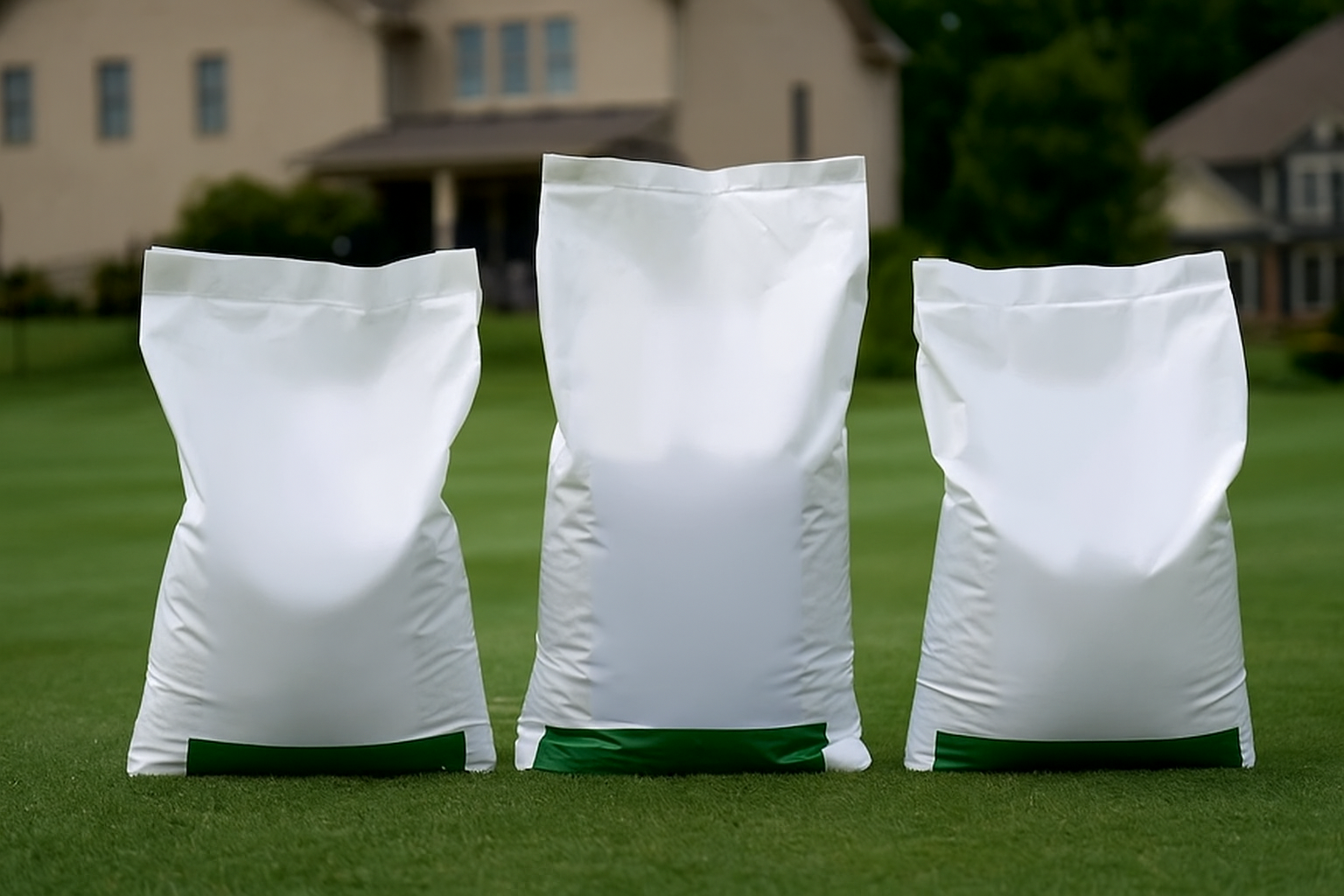

1 thought on “Nitrogen-Rich Fertilizers For Lush Grass: Essential Tips For a Vibrant Lawn”